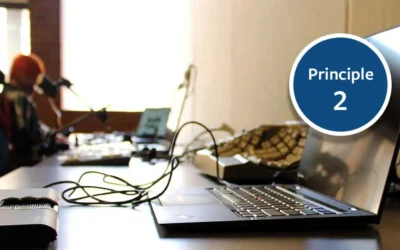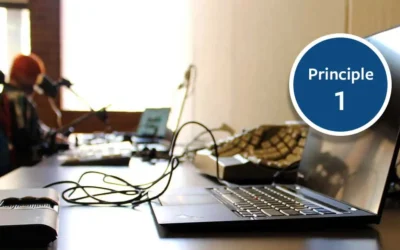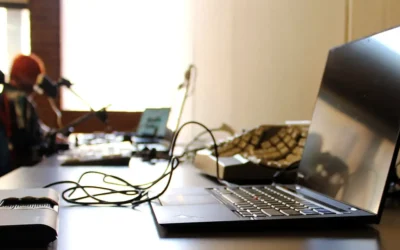Off-the-Shelf Museum CMS: When to Buy One and Where to Find One

Rachael Cristine Woody
Staff capacity, technical knowledge, and desire to use museum tools all factor into which CMS platform will work for a museum. Sometimes a large, completely customized, robust CMS makes sense. Other times, it’s the modestly-sized and pragmatically-built CMS tool that’s the better choice.
When I work with clients to acquire a museum CMS there are several pieces of information I need to know about their situation before we even begin discussing options:
- What tools are staff currently using to manage their collections?
- What’s the staff capacity for learning and using new software?
- Who will use the CMS and how?
- What are the desired outcomes from using a museum CMS?
Technical knowledge, available budget, and desired outcomes all play a role in determining what the right museum CMS option is for a museum. In many cases, an off-the-shelf museum CMS is the best option. In this post I’ll review the top four scenarios for which an off-the-shelf CMS makes sense—and where you can find some to consider.
For more on the research and selection process, please get your free e-copy of my book: How to Select, Buy, and Use a Museum CMS, courtesy of Lucidea Press.
When Buying an Off-the-Shelf Museum CMS Makes Sense:
- You need a CMS that’s affordable. This is the #1 thing to consider as the museum needs to afford any initial implementation cost as well as annual licensing fees. Off-the-shelf CMS products are affordable by their very nature; they’re off-the-shelf, plug-and-play. Minimal set-up or maintenance is required, and as a result, they’re more affordable. If your museum budget is tight you need an affordable CMS product, and an off-the-shelf system may be the right one for you.
- You need a CMS that’s convenient and easy to set up. This comes down to staff technical knowledge and capacity. If museum staff have limited technical knowledge and/or they don’t have the time for an intricate museum CMS implementation, an off-the-shelf product is the better choice.
- You need a CMS that’s intuitive and easy to use for different skill-levels. For museum staff with limited technical prowess, or museums that rely heavily on volunteers and interns, an off-the-shelf, easy to use product is a necessity. Buying a large, complicated, and highly technical CMS doesn’t do any good if no one at the museum can use it.
- You have limited in-house IT and no money to outsource technical support. Museum CMS implementation, maintenance, trouble-shooting, and updates all require staff with technical knowledge beyond the typical catalog entry work. If your museum lacks IT staff and can’t afford to outsource technical support, choosing an off-the-shelf option with easy implementation and minimal maintenance is the best way to go.
If you’ve determined that an off-the-shelf museum CMS is the best option for you, the next step is to familiarize yourself with the options. While there’s no definitive off-the-shelf list, there are a few places you can look to view all CMS options.
Where to Find Off-the-Shelf CMS Options:
- Canadian Heritage Information Network CMS Vendor List
- Car Library and Museum
- Collections Trust (UK)
- Software Comparison Sites such as Capterra and G2
Conclusion
Choosing the right CMS for your museums is so important to get right as it’s the one tool that helps you care for, manage, and share your collections. Please tune in again next week where we’ll cover What to Look for in an Off-the-Shelf Museum CMS.

Rachael Cristine Woody
Consultant, author, and blogger Rachael Cristine Woody advises on museum strategies, collections management and grant writing for a wide variety of clients. Learn about Lucidea’s Argus solution for unrivaled museum collections management. And register here for Rachael’s next webinar on 9/30/20 where she’ll expand on topics related to buying and using an off-the-shelf CMS.
Similar Posts
Museum Collections Online with Accessibility Principle 2: Operable
Compliance with WCAG Version 2.1 Principle 2: Operable
Museum Collections Online with Accessibility Principle 1: Perceivable
Compliance with WCAG Version 2.1 Principle 1: Perceivable, affecting information published from museum CMS to an online portal; expert guidance
Accessibility Standards for Museum Collections Online
A museum’s compliance with the ADA Title II 2024 update has benefits for its online content and for the museum’s community of users.
Museum TrendsWatch 2024: Digital Twins and Doom Loops & Combatting the Loneliness Crisis
Digital Twins is the construction of a digital surrogate for a person, place, or thing—one of several new concepts and trends in the museum sector.




Leave a Comment
Comments are reviewed and must adhere to our comments policy.
0 Comments